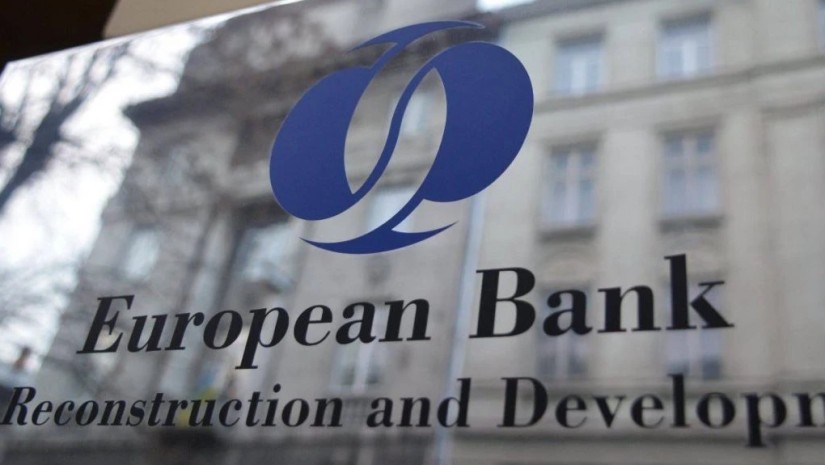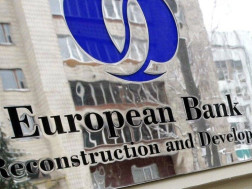The European Bank for Reconstruction and Development (EBRD) has assessed the opportunities for Central Asian countries to participate in the regional value chain within the Trans-Caspian International Transport Route (Middle Corridor, TITR), Report informs.
According to the EBRD, with its two-layer catchment area – 300 km to the north and south of the Central Trans-Caspian Corridor– the CTCN spans all major economic and population centres in Central Asia and ensures connectivity within the region and with Europe through key transport network links. The CTCN has the greatest potential for further development, as it allows not only for transport network development, but can also support regional development in Central Asia. This region has an extensive transport network, which can serve as the basis for further regional cooperation and coordinated project implementation.
“In Kazakhstan, two sectors with the highest proportion of non-domestic and non-regional value added in gross exports are wood and paper and petroleum and chemical products (30 per cent and 25 per cent, respectively). The Taraz Special Economic Zone (SEZ), located within the catchment area of the CTCN, is focused on the production of new chemicals, a promising area for the country’s integration into global value chains. Aktau Sea Port, one of the two Kazakh exit points on the Caspian Sea, and the associated SEZ are important for overall exports, as well as for the export of petroleum products. The development of the CTCN could play a significant role in economic development, as seven of the country’s 13 SEZs are within the primary catchment area of the CTCN, including the SEZs focused on textile processing and petro-chemistry (Ontustik), tourism and mixed production (Turkistan), and information technology development (Park of Innovative Technologies, Almaty).
“The Kyrgyz Republic has the greatest degree of integration into regional and global value chains, despite its small economy. This is mainly down to the country’s relatively more liberal trade regime. The share of external value added in total exports is as high as 55 per cent for wholesale trade, indicating significant integration into value chains. Also, export services, such as construction, finance and hospitality, make up 20-30 per cent of external value, providing some bright spots for further integration.
“The top three regions by industrial production in the Kyrgyz Republic are Chui, Issyk-Kul and Jalal-Abad, all within the catchment area of the CTCN. In this respect, developing the CTCN creates an opportunity for the country to facilitate economic diversification and development, should railway connectivity with the Kazakh and Uzbek networks be improved through the modernisation of the Lugavoya-Almaty and Osh-Andijan connections. In addition, the development of a multi-modal approach would facilitate efficient storage, sorting and distribution activities in major production centres,” the Bank said.
According to the EBRD, in Tajikistan, integration into global and regional value chains is very limited, accounting for around 5 per cent of the best-performing sectors: “This is also a reflection of the country’s relatively low industrial production, with the main industries being aluminium processing and chemical production. In addition to heavy industry, agriculture is important for the economy. Tajikistan’s top manufacturing companies are generally located in the western part of the country, with the largest companies in the capital, Dushanbe, within the catchment area of the CTCN. The city is connected by east-west road and rail infrastructure towards Uzbekistan and into the rest of the country. Improving rail connectivity with Uzbekistan, investments to increase speeds on the railway network and enhancing customs services would lower transaction costs and facilitate integration into cross-border production chains.”
“In Turkmenistan, non-gas and non-oil exports constitute a very small portion of the overall trade structure. However, despite their small volumes, transport equipment, electrical and machinery goods, and agriculture are key sectors that could offer opportunities for further integration into global and regional value chains, as somewhat higher non-domestic value added can be observed in exports of these products. The main manufacturing industries include cotton processing, chemicals and construction, including cement factories located in the regions of Balkan, Lebap and Ashgabat. While these regions are outside the direct catchment area of the CTCN, ensuring smooth connections to the country’s Central Asian neighbours by improving key transport links would facilitate the main economic producers’ integration into regional value chains.
“Uzbekistan has been the least integrated Central Asian country in terms of global value chains.12 However, this is expected to change in light of recent liberalisation efforts. The top industrial producers are located in Tashkent (including Tashkent City), Andijan and Navoi regions, all within the CTCN catchment area. The Tashkent region’s top industries include agriculture, energy production, mining, metallurgy, fertilisers, chemicals, electronics, textiles, cotton processing, food processing and footwear. The region and the capital are well connected by both rail and road infrastructure. The Navoi region is a mining area with significant activity in natural gas, petroleum, metals, construction materials and gold. The Andijan region, located in the easternmost portion of the country, bordering the Kyrgyz Republic, is Uzbekistan’s third top-producing region, with petroleum, natural gas, metals processing, chemicals, light industry, food processing and agriculture. Because of its varying production patterns, as well as domestic and international connections, further improvements to assets and network rehabilitation, in tandem with a structured multi-modal and inter-modal approach, would facilitate the country’s integration into regional and global value chains,” the EBRD said.























